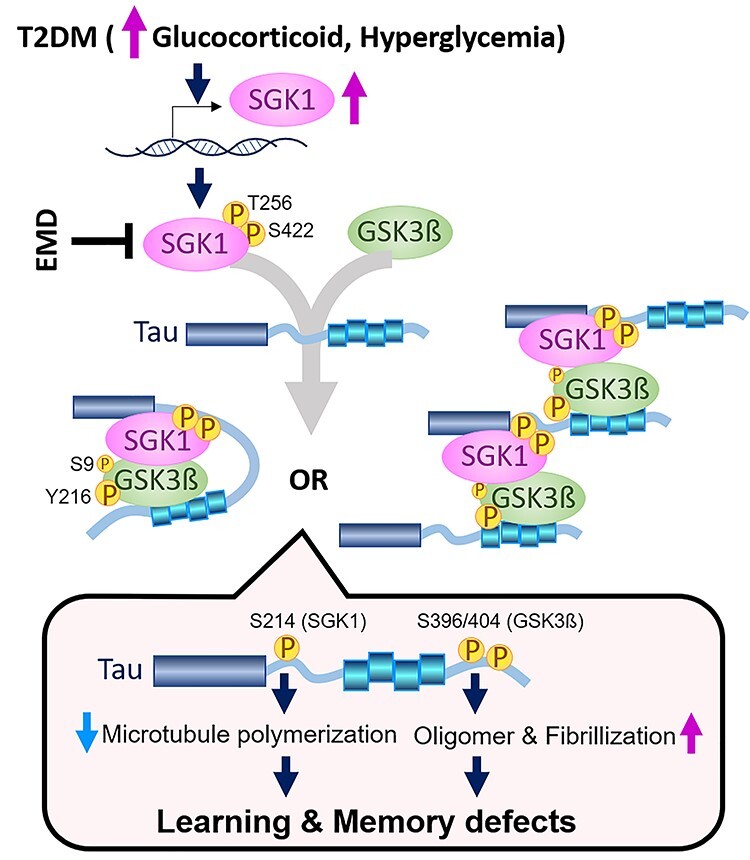Figure 7 .

Proposed molecular mechanism for the acceleration of tau pathology by diabetes. Elevated glucocorticoids and hyperglycemia result in transcriptional and post-transcriptional upregulation of SGK1, leading to a tertiary complex containing tau, SGK1 and GSK-3ß. There are two kinds of possible tertiary complexes (left, intramolecular tau complex; right, intermolecular tau complex). The tau tertiary complex promotes GSK-3ß activation and subsequent tau phosphorylation, which results in impaired microtubule binding activity of tau by SGK1-associated phosphorylation at Ser214 and facilitates tau fibrillization by GSK-3ß-associated pSer396/404, leading to defects in learning and memory. A chemical compound, EMD638683 (EMD), inhibits SGK1, thereby suppressing the tertiary complex and tau phosphorylation.
